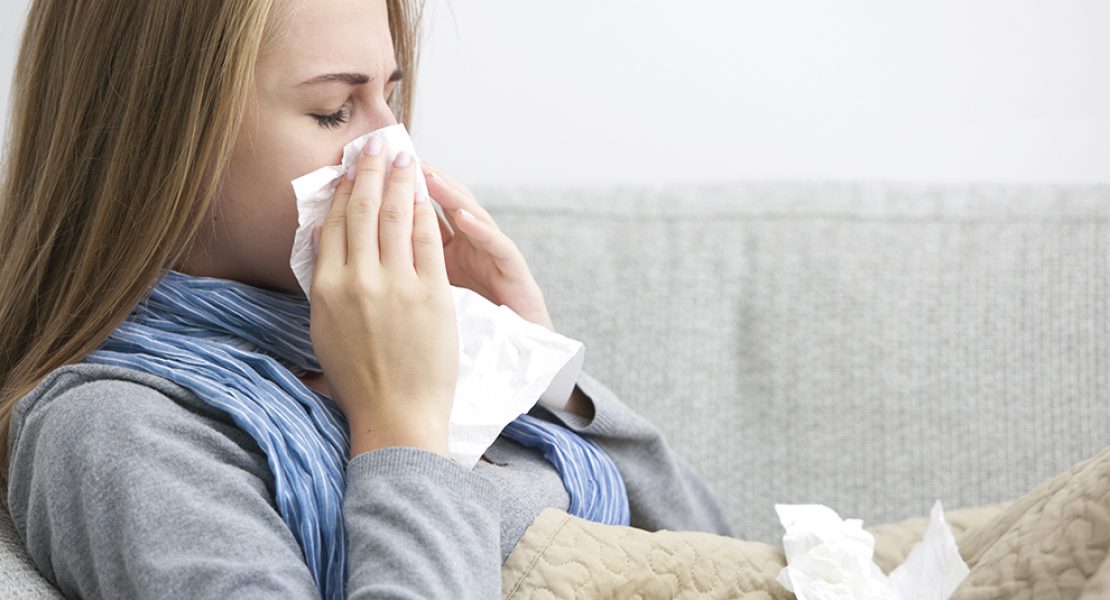How to Prevent (and Survive!) The Flu This Year

It’s that time of year again. Time for the dreaded winter beast – the influenza virus. It’s also time for the great yay/nay debate – do I get a flu shot, or do I skip it?
Lauren Strohm, DO, a physician at St. Luke’s Palmer Family Practice, comes down emphatically on the “yay” side. “Practically everyone should get the flu vaccine every year,” she says. It’s especially important for the high-risk parts of the population, such as people with cardiac, pulmonary problems, the elderly, the very young, and those with compromised immune systems.
However, there’s one small segment that should not get the vaccine. “Sometimes people develop hives or other severe allergic reactions to it,” Dr. Strohm says, “and they should avoid it. However, an allergy to eggs isn’t a red flag anymore. Most flu vaccine manufacturing processes no longer involve eggs.”
Generally, flu symptoms mimic those of an ordinary cold – but ramped up. Muscle aches, coughing, a sore throat, extreme fatigue, and a fever of 100.4 degrees and above are common distinguishing hallmarks as well. “Influenza requires a clinical diagnosis,” Dr. Strohm adds. If you’re beginning to show symptoms, see your physician ASAP.
And while there’s no real cure for the flu (it’s a virus, so antibiotics just won’t work), the symptoms usually subside within seven to 10 days.
So why bother getting the shot? For starters, it can spare you from the miseries of being slammed by the virus; it can also decrease your chances of spreading it to others. If you’re carrying the virus, you can be contagious for a few days before and after symptoms emerge.
And while the flu vaccine doesn’t provide 100% protection against the disease, it will significantly reduce your risk. And widespread vaccination promotes “herd immunity”—when the illness has a tough time gaining a foothold when most people in a community have been immunized.
Consider, too, that a case of the flu can be followed by something more serious—particularly pneumonia. That double-whammy can be really debilitating for someone in reasonably good health; just imagine what it could do to a person who’s not.
“But wait!” some say. “I know someone who had the shot and they got the flu anyway! That means it doesn’t work!”
Not so, Dr. Strohm cautions. Because the vaccine doesn’t include a live virus, it can’t cause the flu by itself. “But it’s easy to get infected at this time of year,” she says, “so it’s possible that those people had already been exposed to the flu—but weren’t yet showing symptoms—before being vaccinated.” Plus, flu immunity takes about two weeks to develop. So you’re still susceptible if you’re exposed to the virus within that window.
In addition to getting vaccinated, you can help stop the spread of the flu virus by washing your hands thoroughly, several times a day. “Hand sanitizers are okay in a pinch, but those that are alcohol-based can aggravate eczema and other skin conditions as well as dry out your skin.”
“My go-to method is to use soap and water, scrubbing for one to two minutes as frequently as you can – certainly before meals and after you’ve had contact with objects that many other people have touched,” she says. “Things like grocery carts, gas pumps, and public door handles.”
Despite your best efforts, you still might come down with the flu. Over-the-counter remedies such as cough suppressants, acetaminophen, and antihistamines may help you feel better—but they won’t help you kick that nasty bug any faster.
But you can still fight back. “Tamiflu is the only medication that can lessen the duration of the flu by a day or two and reduce its symptoms,” Dr. Strohm says. It works best when taken during the first 48 hours of showing symptoms. It’s available only by prescription.
“The influenza virus is always changing,” Dr. Strohm concludes. “Every year, we encounter different strains. And that is why it’s so important to get your flu shot every year.”
When You Need an Appointment ASAP
St. Luke’s offers two convenient ways to get the care you need right away.
Visit a St. Luke’s Care Now Location
Sometimes you need quick medical attention, but an ER visit would be overdoing it. Or you might have a simple situation – like getting a flu shot – that really doesn’t require a full office visit. That’s when you should consider St. Luke’s Care Now walk-in centers for all your urgent care needs. Its 15 locations throughout the region require no appointment and offer extended service hours. For more information, visit stlukescarenow.org
ONLINE VIDEO DOCTOR VISIT
Wondering if your cough, stuffiness, and aches signal a case of the flu? You can find out in just minutes through a St. Luke’s “video visit.” Whether you’re at home, at work, or on the road, access a St. Luke’s provider from your smartphone, tablet, or computer. Download the St. Luke’s app on Google Play or the App Store. Pick your physician, fill in some basic information, and make your payment. You’ll get virtual “face time” with a provider, who can assess your symptoms, make a diagnosis, and even send in a prescription when needed. For more information, visit connectwithadoctornow.org























